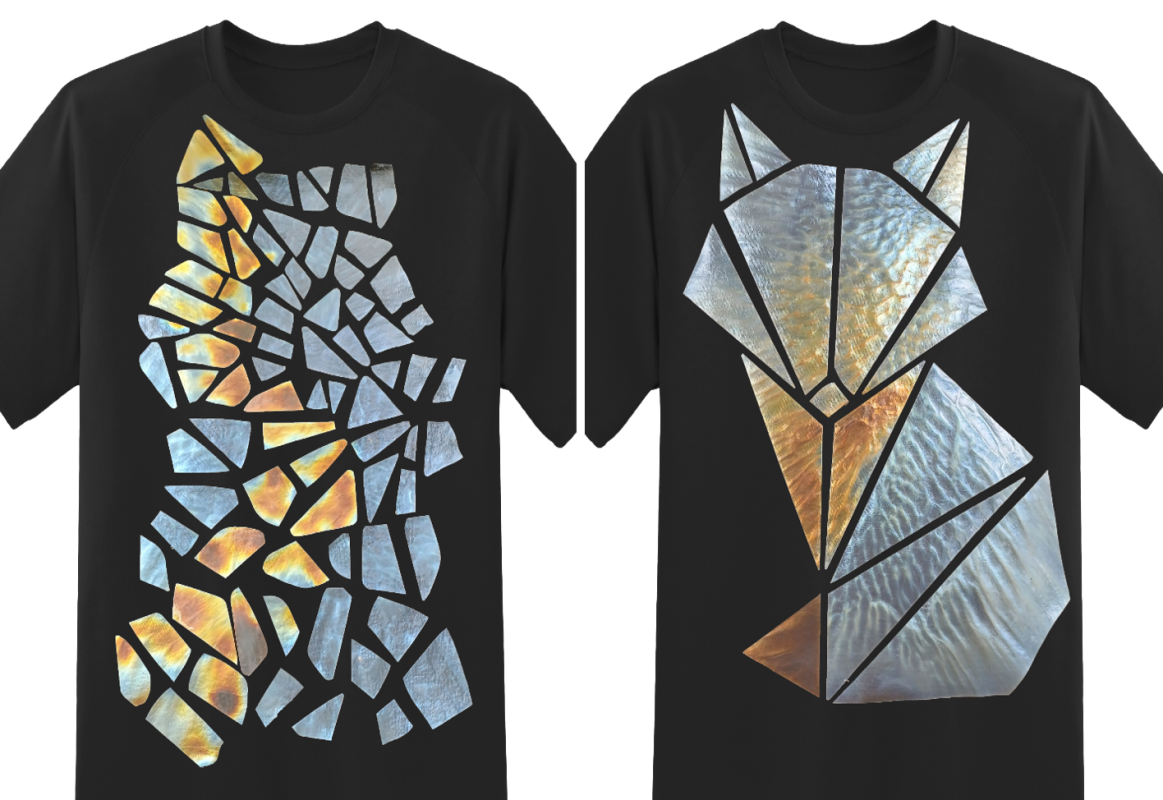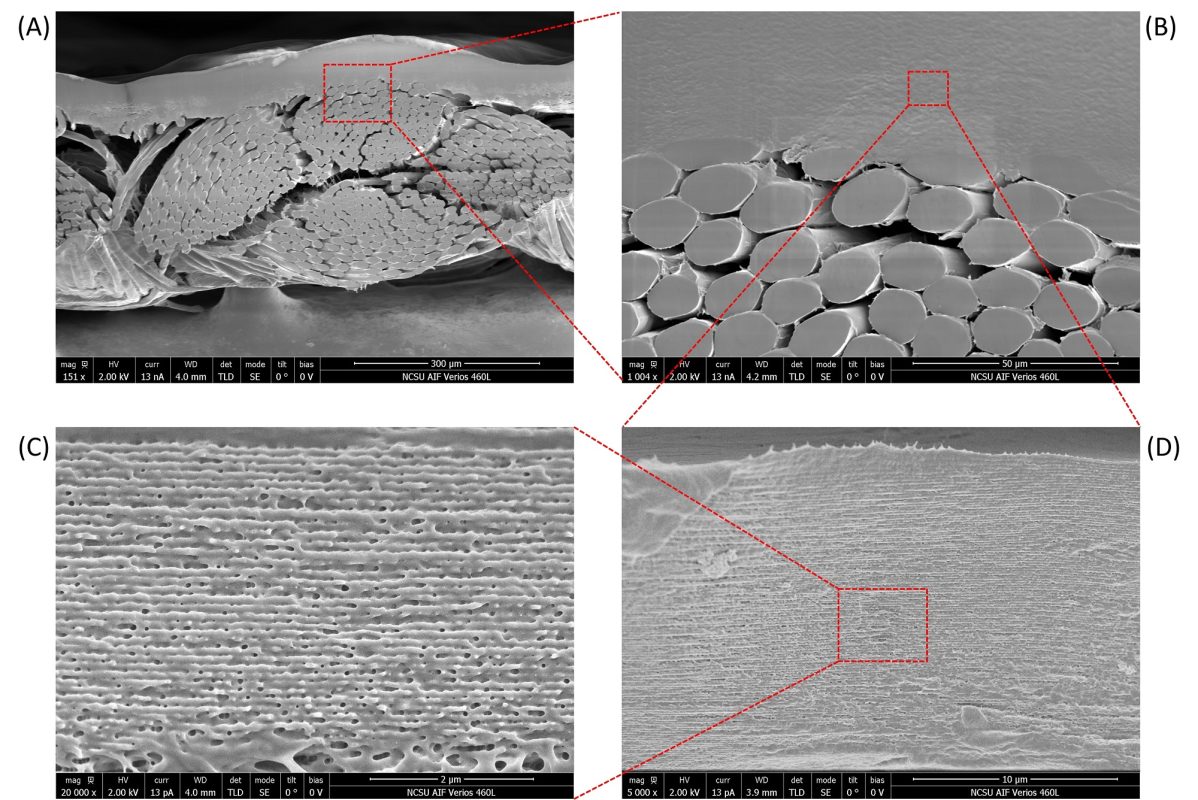
I am Joseph Gutierrez. I am a graduate student from the Departments of Forest Biomaterials and Textile Engineering, Chemistry, and Science at NC State. I have a background in Chemical Engineering and am interested in bio-inspired sustainable materials and nanotechnology. If you want to solve a problem, nature probably already has an answer.
I enjoy hanging out with friends and exploring new places and activities, mainly if good food is involved. I also like to use my time swimming at the gym, running, or biking around the city’s trails.
What instruments are you using for your research and why do you like them?
The instrument at the AIF I used the most, and certainly my preferred one, is the FEI Verios 460L field-emission scanning electron (FE-SEM). The remarkable self-assembled structure of cellulose nanocrystals requires the capability of this instrument to be appreciated and measured. In addition, part of the study requires knowing the distance between the layers of crystals after a full chiral rotation (100 to 300 nm), a feature that is directly related to the color observed; if you change that distance, you change the coloration.
I have also used the ToF SIMS 5 (ION TOF), the Zeiss Xradia 510 Versa 3D X-ray Nano-CT, The Transmission Electron Microscope (TEM) FEI Talos F200X G2 (Field Electron and Ion Company) for this and other projects to better understand the morphology and the properties of the materials.
What have you been researching and how is it impacting the community?
There is a demand for innovations in how fabrics appear, such as iridescence, for a variety of applications including apparel. Thus, I am working on bio-inspired solutions to create vivid and bright iridescent colors on textiles, which will be an alternative to traditional textile coloration techniques that are resource-intensive and commonly use synthetic pigments and dyes. We adapt how butterflies exhibit iridescence through how the protein molecules structurally order on its wings, which leads to light refracting in a variety of directions.
I utilize cellulose nanocrystals (CNCs) which self-assemble into an organize structure similar to a DNA helix, at the nanoscale that we leverage to create and tune the iridescent coloration. I developed a process to create films of CNCs that can not only later be cut and patterned but, as illustrated in Figure 2, can also be easily attached to textiles similar to a printing technique. The SEM images of these films on lyocell (rayon) in Figure 3 reveal that the iridescent colors arise from the chiral nematic structural ordering of the CNCs at the nanoscale.

The textile industry has a heavy reliance on the consumption of petroleum and other precious resources. It has also historically been one of the worst environmental polluters. Thus, there is an urgent need for sustainable solutions.
As a raw material, we use the most abundant biopolymer in nature, cellulose, which is present in cotton, plants, and trees. Cellulose is the same material used in the papermaking industry, and it can be utilized for remarkable and countless possibilities to achieve sustainable solutions, such as an alternative to single-use plastics derived from petroleum resources.
My project focuses on developing more sustainable alternatives to textile coloration, with a particular emphasis on creating iridescence through biomimicry. We used a simple method to produce as self-standing film from an aqueous CNC suspension that can be easily transfer and attached to a fabric simply using water, requiring no additional chemicals. This method can potentially become a more environmentally friendly process to create iridescent colors on textiles.
What have you learned from your experience at AIF?
High-quality data and images require the best instruments, the best staff, excellent training, and much dedication. The highly knowledgeable staff, careful sample preparation, and the delicate tune and operation of the instruments are critical if you want great results.
Best thing about AIF in 5 words or less?
Great instruments, capabilities, training, and support
Is there a staff member at AIF that has helped you?
Of course! Chuck Mooney, Phillip Strader, Chuanzhen (Elaine) Zhou, and Ruksana Baby. They are all highly knowledgeable and helpful. They provide you with training and suggestions; they help you with sample preparation and data collection. All of this enables us to perform outstanding research and collect high-quality data.
